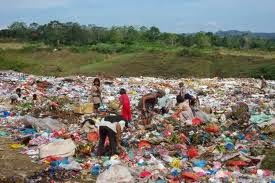Leadership
and Values formation towards good
governance
|
In
our political tradition, it is only during elections that we hold our public
officials accountable. And when the fervor of election pass, we then go back to
our ordinary lives and disengage – letting the politicians do their own thing.
This should not be the case if we want a government that is responsive to the
needs of its bosses. That is why engagement with government should be sustained
all throughout the term of the leader. It is in this constant dialogue that
ideas mature, trust builds and action multiplies. Accountability and
transparency should be constantly demanded.
The
youth calls on city hall to strengthen these partnerships with civil society by
institutionalizing mechanisms of people’s participation in local governance.
Though it is already a policy of the state to do so, the local government unit
should creatively expand it as what have been done by other LGUs through a
People’s Council.
The
youth’s role is vital in building strong political institutions. We should be
seen as partners and not merely as manpower volunteers. Our experiences
engaging with government in meaningful programs posses tremendous formative
value. We shift from a mentality of being mere recipients of services to real
partners that engage the policy and direction of the community.
YOUTH POLICY AGENDA
The
youth leaders raised the following policy agenda.
1.
Invest in
youth profiling and barangay youth organizing and empowerment. The needs of
the youth in the barangay level should be identified and prioritized in order
to guide the barangay government and the barangay youth leaders in forming
their strategic interventions. The city should also invest in capacity
buildings for barangay youth organizations that focus on organizational
development, engaged citizenship formation and basic political education.
2.
Invest in
an independent youth leadership formation program that anchors in political
education and good governance in public service for youth leaders. The city
through the Oro Youth Development Council should also invest in the formation
of youth policy-makers. Those youth councilors who sit as representatives to
different local bodies should be given skills training on basic policy analysis
and making, social advocacy, and basic law.
3.
Creation
of a policy on transparency and mechanism for people’s participation in local
governance. To ultimately sustain the gains of people’s participation in
local governance, the city should enact an ordinance that institutionalizes civil
society participation in the direction of the city. These body becomes the
official people’s representative to local government which shall then choose
who will sit in the different bodies. This is a bottoms-up approach. It is not
the executive who will choose who sits as people’s representatives but the
people themselves would choose. This is also an entry point for pushing a
people’s agenda.
ORO
Youth Parallel Action
Oro Youth Engaged Citizenship Program
This program has two components namely (1) Barangay Youth
Leadership Development Program (2) Oro Youth Political Education Program. The
first program provides the organized youth of the barangay resources to help
them develop the organization. This includes seminars on strategic planning,
needs assessment, project evaluation and monitoring. The OYDC also provides researches
on the basic needs of the youth in their particular barangay. The second
program provides an educational program to the different youth councilors and
local body representatives. This includes policy analysis and policy making, developing
social advocacies and mobilizing resources.
People’s Council Advocacy
The OYDC strongly supports the creation of the Cagayan de
Oro People’s Council in order to strengthen and institutionalize people’s participation
in local governance.



